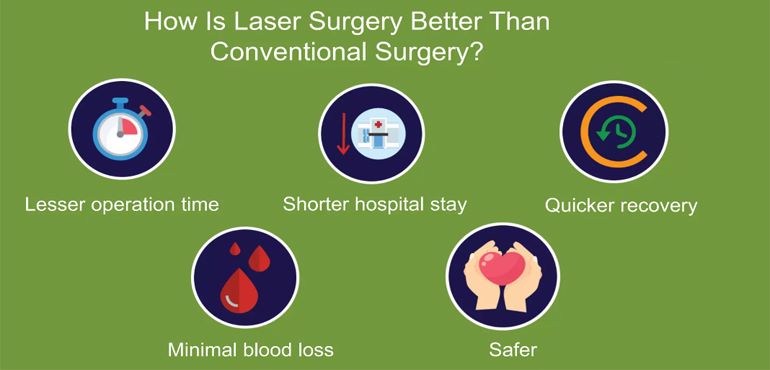
PILES
Hemorrhoids are enlarged, bulging blood vessels in and around the anus and lower rectum. As the tissues supporting the vessels stretch the walls thin and bleeding occurs. When the stretching and pressure continue, the weakened vessels protrude resulting in visible bulge. There are two types of hemorrhoids - external and internal
External (outside) Haemorrhoids form near the anus and are covered by sensitive skin. They are usually painless unless a blood clot (thrombosis) forms.
Internal (inside) Haemorrhoids from within the anus beneath the lining. Painless bleeding and protrusion during bowel movements are the most common symptoms. However, an internal haemorrhoid can cause pain if it is completely prolapsed. Usual symptoms are bleeding and protrusion of skin during bowel movements. Some patients may complain of itching & Pain in perianal region.
HOW IS A PILES DIAGNOSED?
Doctors often recognize this condition just by doing a physical exam of the rectum. By lubricating the glove and inserting a finger into the rectum, a doctor can gauge any unusual growth around the rectum area. A doctor might also use a sigmoidoscopy or a procotoscopy to witness the lower portion of the colon.
SURGICAL PROCEDURE TO TREAT PILES:
Haemorrhoidectomy: This is the process by which a surgeon eradicates the excess prolapsing tissue (piles) by cutting the whole mass from anal verge to its origin high above. The patient is sedated before performing this procedure. Some amount of pain is usually unavoidable after the procedure as the wound is usually left open to heal with time.
Stapled Hemorrhoidopexy: This surgery is performed primarily for internal haemorrhoids. The process involves blocking the blood supply of the pile mass from above by excising the mucosa and repositioning the prolapsing mass by surgical stapling. The process of stapling has less pain compared to open haemorrhoidectomy.



